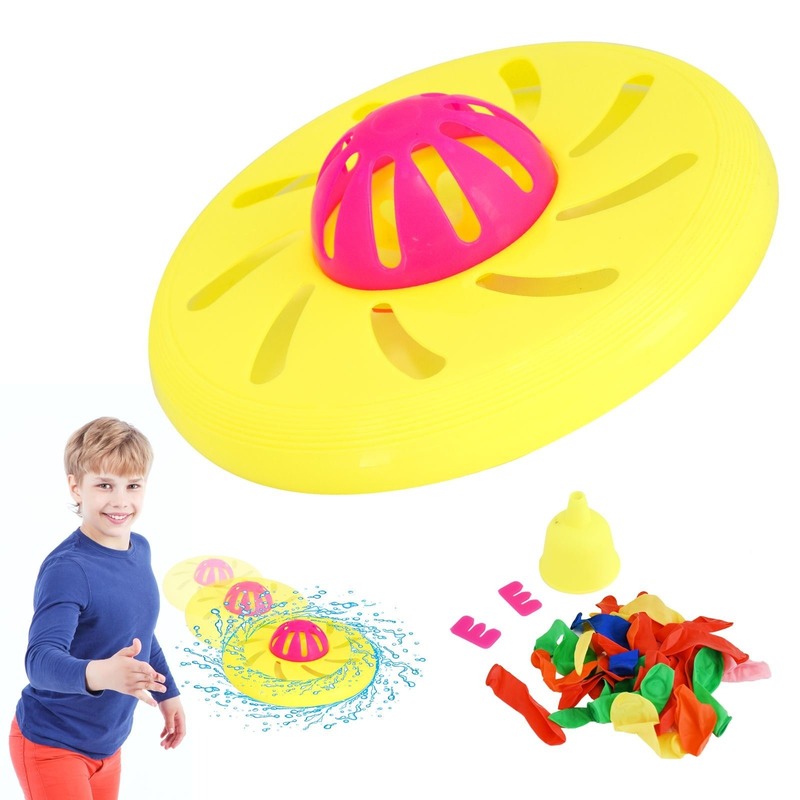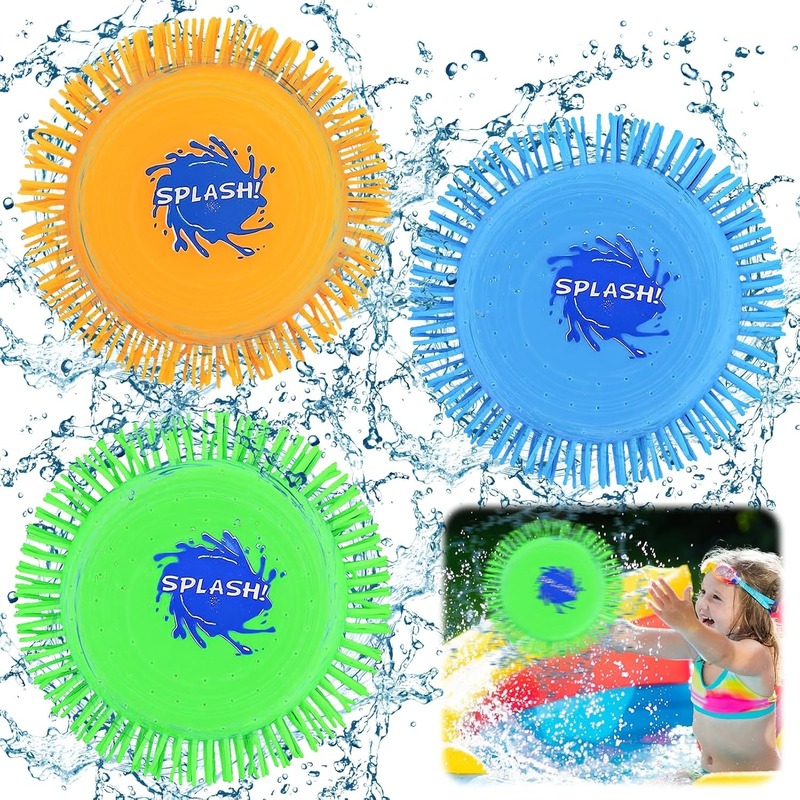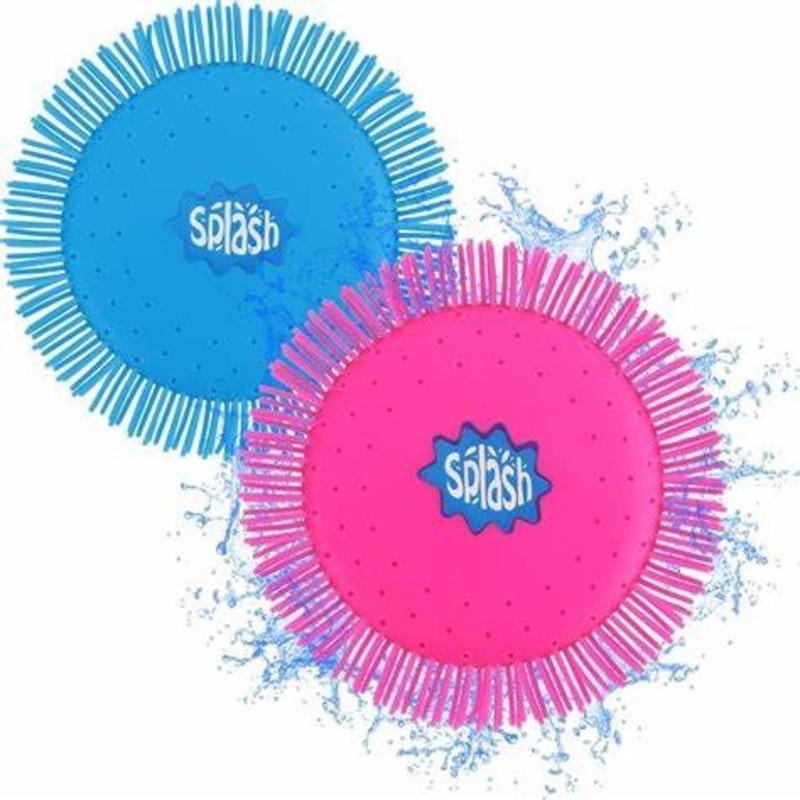Introduction to Water Frisbee
Water Frisbee is an exciting and refreshing sport that combines the fun of ultimate frisbee with the cooling environment of a water setting. Played typically in shallow pools or at the beach, water frisbee is an inclusive activity suitable for all age groups and fitness levels. Its basic premise mirrors that of traditional frisbee—players pass the disc to team members with the goal of catching it in the opposing team’s end zone.
One of the key attractions of water frisbee is its low-impact nature, making it easier on the joints than many land sports. It also provides an excellent full-body workout with an emphasis on cardio, given the resistance water adds to movement. Whether you’re looking for a casual game with friends or an intense competitive match, water frisbee offers diverse ways to get involved.
For those new to the sport, learning water frisbee involves mastering the balance between aquatic agility and precise disc skills. As you advance, you’ll develop strategies and teamwork, all while enjoying the camaraderie and excitement that come with playing in the water. With just a frisbee disc and a love for water play, you’re ready to dive into this thrilling sport.
Essential Gear for Playing Water Frisbee
To get started with water frisbee, you’ll need some basic equipment. The essential gear for playing this unique sport ensures you have fun and stay safe. Here’s what you should have before jumping into the game:
- Frisbee Disc: The most crucial piece of equipment is, of course, the disc itself. Opt for a disc that’s specifically designed for water play. These are typically made from buoyant and durable materials that won’t sink and can withstand salty seawater or chlorinated pool water.
- Swimwear: Comfortable swimwear is a must. Choose a swimsuit that allows for freedom of movement and won’t weigh you down as you play.
- Water Shoes: To protect your feet and provide better grip in the pool or on the beach, water shoes are a good idea. They can prevent slips and protect your feet from rough surfaces or hot sand.
- Sun Protection: If you’re playing outdoors, make sure to apply waterproof sunscreen to protect your skin from UV rays. A hat and UV-protected sunglasses can also be beneficial.
- Towels and Dry Clothes: Always have towels to dry off after the game. It’s also wise to bring a set of dry clothes for comfort once you’re out of the water.
With this gear in hand, you’re ready to step into the game and enjoy the energetic world of water frisbee.

Rules of the Game
Understanding the rules is crucial in water frisbee, much like any other sport. Here are the basics to keep in mind:
- Starting Play: Teams line up at opposite ends of the play area. The game begins with a throw-off from one team to the other.
- Objective: The aim is to catch the frisbee in the opposing team’s end zone, much like in traditional ultimate frisbee. This scores points.
- Passing: Players can pass the disc in any direction. No running with the disc is allowed in water frisbee.
- Turnovers: If the disc touches the water because of a missed catch or defensive block, it results in a turnover. The opposing team then takes possession.
- Contact: Physical contact should be minimal. Excessive force or intentional contact can lead to fouls.
- Fouls: Players must not impede others’ movements or possession of the disc. Fouls result in a change of possession or a penalty throw.
- Scoring: A point is scored when a player catches the frisbee in the opposing team’s end zone. The team with the most points at the end of the playtime wins.
- Substitutions: Teams can substitute players at any dead disc situation.
- Out of Bounds: If the disc goes out of the designated play area, the game pauses. Play resumes with a throw from the sideline by the opposite team.
- Game Duration: Games are typically played within a set time frame. The duration can vary based on preference or competition rules.
By keeping these basic rules in mind, players can ensure a fair and enjoyable game of water frisbee. It’s a sport that rewards agility, strategy, and team coordination, all while splashing around and having a great time.
Techniques for Throwing and Catching
Mastering the techniques of throwing and catching is fundamental to excelling in water frisbee. Here are some tips to refine your skills:
- Practice Grip: For a secure throw, grip the edge of the frisbee with your thumb on top and fingers underneath.
- Wrist Flick: The wrist flick is crucial for a stable flight. Snap your wrist as you release the disc for better accuracy.
- Throwing Stances: Try various stances to find the most comfortable one for you. A stable stance keeps your balance in water.
- Eye on the Disc: Always keep your eyes on the frisbee when catching. Reach out with both hands for a reliable catch.
- Soft Hands: Soften your grip as the disc arrives. This avoids bounce-backs and secures the catch.
Remember, water adds resistance to movement. Your throws and catches might differ from land play. Practice in the water to adapt your skills to the aquatic environment.

Strategies for Water Frisbee Team Play
Developing strategies is key to succeeding in water frisbee team play. Here are some effective tactics to consider:
- Communication: Constant, clear communication helps teammates coordinate their movements and passes.
- Positioning: Stay aware of your position and your teammates’. Spread out to cover more area and avoid crowding.
- Set Plays: Create set plays for throw-offs and scoring opportunities to outsmart the opposing team.
- Transition Quickly: Switch swiftly between offense and defense as the disc changes possession.
- Player Roles: Assign roles based on skills. Some players focus on throwing, while others on catching or defense.
- Use of Space: Use the water to your team’s advantage. Making wide passes can stretch the defense.
- Energy Conservation: Conserve energy by floating or treading water efficiently to stay fresh throughout the game.
Employing these strategies in water frisbee will enhance team performance and increase the chances of scoring points. Practice and adapt these tactics to your team’s strengths for the best results.
Organizing a Water Frisbee Game
Setting up a water frisbee game is easy with some planning. Follow these steps to organize your game smoothly:
- Choose a Location: Find a suitable shallow pool or beach area. Make sure it is safe and allows for free movement.
- Gather Your Equipment: Ensure you have enough frisbee discs and all players have the necessary gear from the list above.
- Define the Playing Field: Set clear boundaries for the end zones and sidelines. Use cones or floating markers.
- Decide on Teams: Form teams with an even number of players. Try to balance skill levels for fair play.
- Review the Rules: Go over the basic water frisbee rules with everyone. Clear understanding prevents disputes.
- Warm-Up: Encourage players to warm up to prevent injuries. Simple stretches and swimming exercises are good.
- Assign Roles: Designate roles like scorer, defender, and substitute. Discuss strategies for effective team play.
Once everything is in place, start with a throw-off and enjoy the game. Keep track of the score and time. Most importantly, have fun and foster a spirit of sportsmanship and teamwork among all players.

Tips for Beginners
As a newcomer to water frisbee, starting off on the right foot is essential for a rewarding experience. Here are some beginner tips that will set you up for success in this fun-filled water sport:
- Start in Calm Waters: If possible, begin playing in calm, shallow waters. This eases the learning process.
- Learn the Basics: Get comfortable with the basic rules and objectives of the game before jumping into deeper strategies.
- Master the Disc: Familiarize yourself with handling and gripping the frisbee. Practice simple throws and catches.
- Build Stamina: Water resistance can tire you out quickly. Gradually build up your stamina with swimming exercises.
- Warm-Up Properly: Always warm-up before playing to reduce the risk of injury. Include stretches and light swimming.
- Stay Hydrated: Even in water, it’s easy to get dehydrated. Drink plenty of fluids before and during the game.
- Watch and Learn: Observe more experienced players. Notice their techniques and how they communicate as a team.
- Focus on Fun: Remember, it’s all about having fun. Don’t worry about making mistakes and enjoy the game.
By following these tips, beginner players can quickly adapt to the sport and start enjoying the unique excitement that water frisbee offers.
Safety Precautions for Water Frisbee
Playing water frisbee is thrilling, but safety is paramount. Here are essential precautions to ensure a secure and enjoyable game:
- Monitor the Environment: Always check water conditions before playing. Avoid areas with strong currents or waves.
- Safety Gear: Wear life vests if necessary, especially for weaker swimmers. It boosts confidence and safety.
- Stay Within Depth: Play in water depths comfortable for all players. Everyone should stand easily.
- Buddy System: Implement a buddy system. Ensure no one is alone in the water.
- Hydrate Regularly: Drink water frequently to prevent dehydration. Even in water, players can get thirsty.
- Protect From the Sun: Apply sunscreen generously. Wear hats and sunglasses for extra protection.
- Know Your Limits: Don’t push too hard. Recognize fatigue and rest when needed.
- First Aid: Keep a first aid kit nearby. Be ready to handle minor injuries promptly.
- Emergency Plan: Have an emergency action plan. Know the nearest lifeguard station or how to call for help.
With these safety measures in place, players can dive into the game worry-free. Never compromise on safety for the sake of the game.
